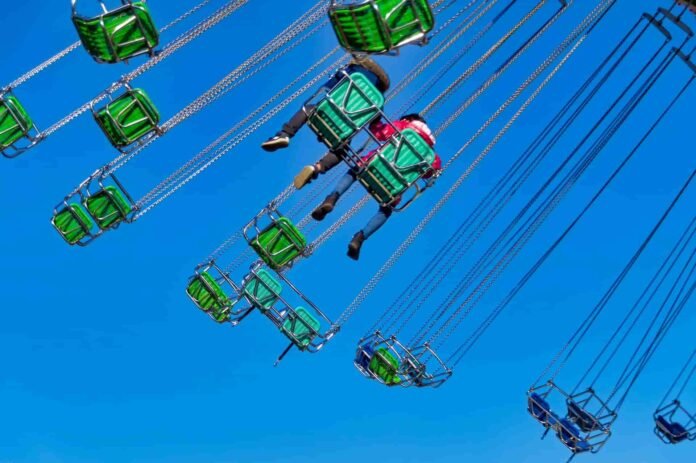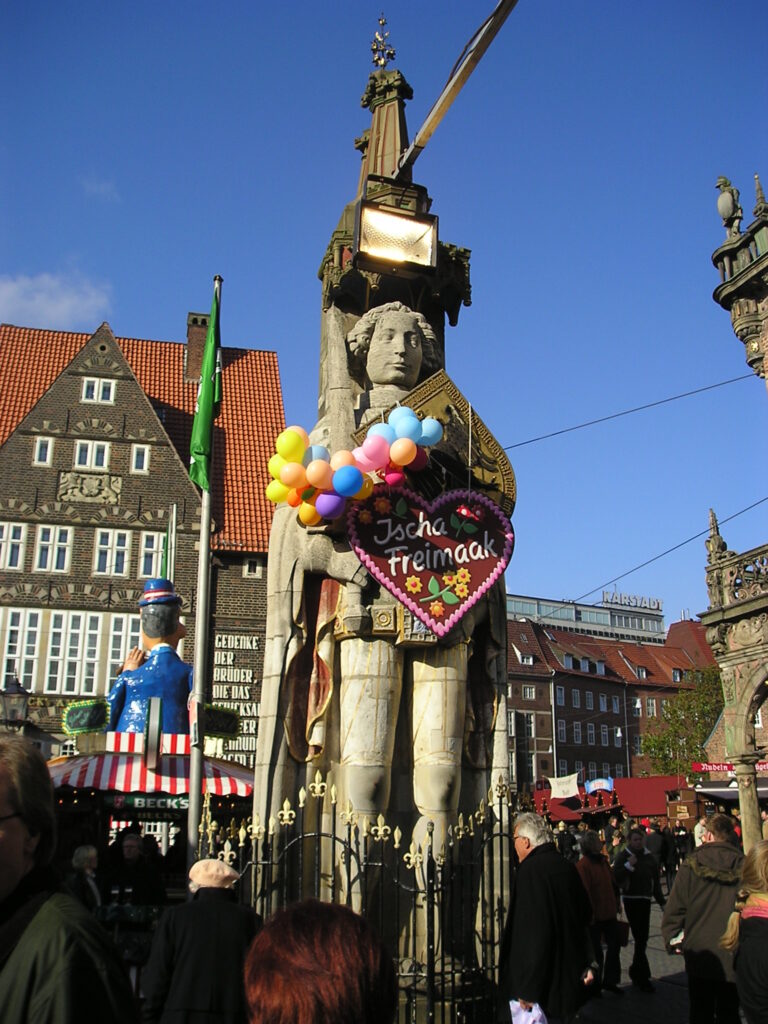
The Bremer Freimarkt is one of the biggest Folk Festivals in Northern Germany and takes place the last two weeks of October 2023. It emerged from October 13 to October 29. The Free Market attracts around 4 million visitors yearly.

The main fair attractions are located on the Bürgerweide by the train station. The “Kleine Freimarkt” takes place in the old part of Bremen on the market square by the Liebfrauenkirche (Church of Our Lady). It has a nostalgic touch with fewer rides and a Middle Ages market.
Freimarkt means ‘free market’ and first took place in 1035. Emperor Konrad II gave the Archbishop Adalbrand of Bremen the “Jahrmarkt-Gerechtigkeit” (yearly market justice). What that meant for Bremen was that they were allowed to have two markets yearly that didn’t have the same restrictions as the weekly markets.
During the ‘normal’ markets (Wochenmarkt), people from Bremen and certain guilds monopolised selling their products. But during the bi-yearly Jahrmarkt, merchants and artisans from out of town and other guilds were allowed to sell the merchandise. Soon, the market was called “freier Markt” (free market).
The markets took place one week before Pentecost in the spring and one week before Willehadfest on November 8th. The fall market was incredibly successful because farmers would come to town to sell the leftovers of their harvest.
The “Jahrmarkt-Privileg” had to be renewed by every new emperor after Konrad II before it eventually was turned over to the city council of Bremen.
Starting in the 15th century, the market also featured entertainment, mainly by the travelling people (fahrendes Volk) with their Gaukler (jugglers), Wahrsager (fortune tellers), and Spielmänner (minstrels). They told stories and news from all over Germany and the world.
Other entertainments included exotic animals like a lion or dancing bear and humans that were considered ‘exotic’. ‘
By the 19th century, the commodity market had become a “Vergnügungsmarkt” (amusement market). In 1818, the first swing was put up. In 1822, a “Caroussel-Reiten” (Merry-go-around), and in 1857, a “Hau den Lukas” (strongman game).
Drehorgeln (barrel organs), Schiffskarussell (ship carousel) and Berg- und Tal-Fahrt (roller coaster ride) followed in the second half of the 19th century.
Schmalzkuchen (deep-fried dough), Honigkuchen (honey cake), and Zuckerwatte (cotton candy) were starting to be sold in the mid-19th century.
The opening of the train route between Bremen and Hamburg in 1847 helped bring more visitors to the market and more carnies.